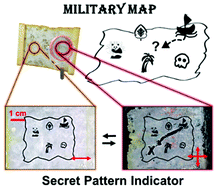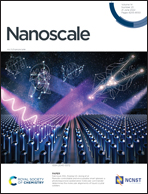Remote-controllable and encryptable smart glasses: a photoresponsive azobenzene molecular commander determines the molecular alignments of liquid crystal soldiers†
Abstract
For the development of optically encryptable smart glass that can control the molecular alignment of liquid crystals (LCs), an azobenzene-based reactive molecule (ARM) capable of trans–cis photoisomerization is newly designed and synthesized. Photo-triggered LC-commandable smart glasses are successfully constructed by the surface functionalization technique using 3-aminopropyltriethoxysilane (APTMS) coupling agent and an ARM. The surface functionalization with the ARM is verified by spectroscopic analysis and various observations including changes in the wettability and surface morphology. Using the ARM-treated substrate, the LC command cell which can effectively switch the molecular orientation of nematic LC (E7) by the irradiation of UV and visible light is demonstrated. The results of optical investigation demonstrate the directional correlation between light and photoisomerization, revealing the tilt mechanism of azobenzene units. The capability to control the molecular orientation of LCs remotely and selectively allows the development of remote-controllable and encryptable smart glasses.



 Please wait while we load your content...
Please wait while we load your content...